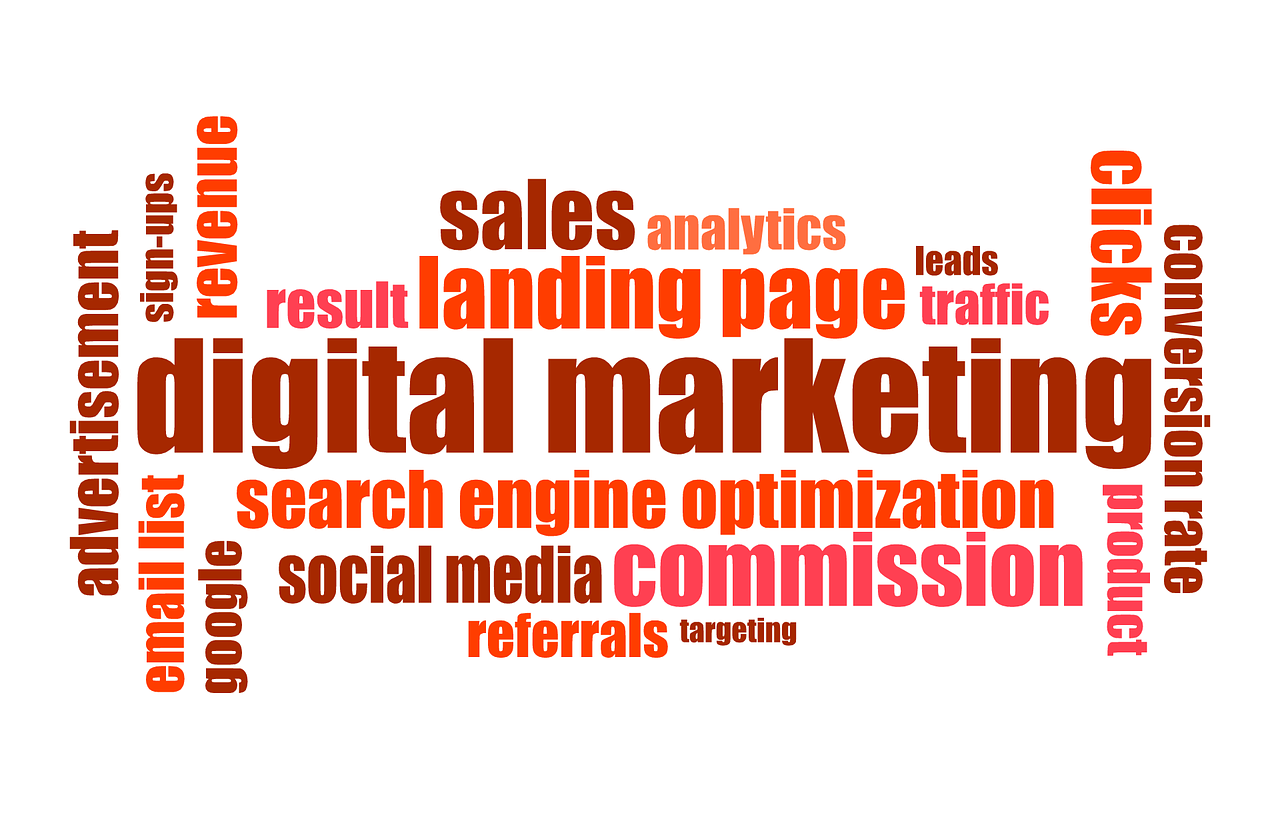
Digital marketing is an essential aspect of the business world today. With the exponential growth of internet users worldwide, businesses must adapt and embrace digital marketing strategies to reach their intended audience and remain competitive. This comprehensive guide to digital marketing will provide you with valuable insights, strategies, and tips to help your business thrive in the digital landscape.
1. What is Digital Marketing?
Digital marketing is the practice of promoting and selling products and services to customers via online channels such websites, social networking sites, search engines, and email. This form of marketing has become increasingly important as businesses look to connect with their audience in a more efficient, targeted, and cost-effective manner. Unlike traditional marketing methods, digital marketing allows businesses to engage with their customers in real-time and gain valuable insights into customer behaviour and preferences.
1.1 Key Takeaways
- The advertising of goods or services using digital channels, such as websites, mobile devices, and social media platforms, is known as digital marketing.
- Businesses need to have a strong digital presence to connect with potential customers and stay competitive in the market.
- Digital marketing strategies can be adapted and fine-tuned based on customer behaviour and preferences, making it a more targeted and efficient approach.
2. Why Digital Marketing Matters
Digital marketing is crucial and cannot be emphasized enough, especially in today’s increasingly connected world. As more people are using the Internet to research things, entertainment, and shopping, businesses must leverage digital marketing strategies to reach their target audience and drive sales.
2.1 Global Reach
Digital marketing’s capacity to reach a worldwide audience is one of its key advantages. By utilizing digital channels, businesses can connect with potential customers from all around the world, expanding their market reach and increasing brand awareness.
2.2 Targeted Marketing
Digital marketing enables businesses to target specific segments of their audience based on demographics, interests, and online behaviour. This level of targeting allows for more personalized marketing messages, resulting in higher engagement and conversion rates.
2.3 Cost-Effectiveness
Digital marketing is often more cost effective than traditional marketing methods, allowing businesses to reach a larger audience with a smaller budget. This is especially beneficial for small businesses or startups with limited resources.
2.4 Data and Analytics
Digital marketing provides businesses with access to a wealth of data and analytics on customer behaviour, preferences, and trends. This information can be used to inform marketing strategies and make data-driven decisions, ultimately leading to improved business performance.
3. Types of Digital Marketing Channels
Businesses can leverage various digital marketing channels to connect with their audience. Each channel serves a different purpose and can be utilized to achieve specific marketing goals.
3.1 Website Marketing
A website is the centrepiece of all digital marketing activities, acting as a hub for information on a company’s products, services, and brand. A well-designed website should be fast, mobile-friendly, and easy to navigate, providing a seamless user experience for visitors.
3.2 Pay-Per-Click Advertising
Pay-per-click (PPC) advertising is a form of online marketing where businesses pay for each click on their ads. This can effectively drive targeted traffic to a company’s website and increase brand visibility. Popular platforms for PPC advertising include Google Ads and Facebook Ads.
3.3 Content Marketing
In order to reach and engage a target audience, content marketing requires developing and sharing useful information. This can include blog posts, ebooks, infographics, podcasts, and webinars. Content marketing aims to provide useful and relevant information to potential customers, ultimately leading to increased brand awareness and sales.
3.4 Email Marketing
Email marketing is a powerful tool for connecting with customers and nurturing relationships. By creating targeted and personalized email campaigns, businesses can keep their audience informed about new products, promotions, and company updates, driving customer engagement and retention.
3.5 Social Media Marketing
Social media platforms provide an opportunity for businesses to engage with their audience, build brand awareness, and promote their products or services. Businesses can foster a loyal community of customers and advocates by sharing valuable content and interacting with followers.
3.6 Affiliate Marketing
Affiliate marketing involves partnering with influencers or other businesses to promote a company’s products or services in exchange for a commission on sales or leads generated. This can be an effective way to increase brand visibility and reach new audiences.
3.7 Video Marketing
Video marketing has become increasingly popular as more internet users turn to platforms like YouTube for information and entertainment. Businesses can use video marketing to provide interesting content that resonates with their target audience while showcasing their goods or services.
3.8 SMS Messaging
SMS messaging, or text message marketing, is a form of digital marketing that involves sending promotional messages and offers directly to customers’ mobile devices. Customers can be reached in this fashion effectively with time-sensitive information or promotions, which can increase sales and engagement.
4. Digital Marketing Strategies
A successful digital marketing strategy involves a combination of tactics and channels, all working together to achieve a company’s marketing goals. Some key elements of a digital marketing strategy include:
4.1 Setting Goals and Objectives
Before diving into digital marketing, it’s essential to establish clear goals and objectives for what you want to achieve. This could include increasing brand awareness, driving website traffic, generating leads, or boosting sales. You can focus your marketing efforts and track your progress by setting specific, measurable, achievable, relevant, and time-bound (SMART) goals.
4.2 Understanding Your Target Audience
To create effective digital marketing campaigns, you must have a deep understanding of your target audience. This includes their demographics, interests, online behaviour, and pain points. By gaining insights into your audience, you can tailor your marketing messages and tactics to resonate with them and drive better results.
4.3 Creating High-Quality Content
Content is the foundation of digital marketing, so it’s essential to invest in creating high-quality content that your audience will find valuable and engaging. This can include blog posts, videos, ebooks, infographics, and more. By providing useful and relevant content, you can position your brand as an authority in your industry and build trust with your audience.
4.4 Leveraging Multiple Channels
Digital marketing success often comes from leveraging multiple channels to reach and engage with your audience. This can include a combination of organic and paid tactics, such as social media marketing, PPC advertising, and email marketing. By utilizing multiple channels, you can increase your brand visibility and connect with your audience in various ways.
4.5 Measuring and Analyzing Results
One of the key advantages of digital marketing is the ability to measure and analyze the results of your campaigns. By tracking key performance indicators (KPIs) and utilizing tools like Google Analytics, you can gain insights into what’s working, what’s not, and how you can optimize your marketing efforts for better results.
5. Digital Marketing Challenges
While digital marketing offers many benefits and opportunities, it also comes with its fair share of challenges. Some common digital marketing challenges include:
5.1 Staying Up-to-Date
The digital environment is always changing, making it difficult for businesses to stay up-to-date with the latest trends, platforms, and best practices. To remain competitive, it’s essential to stay informed and adapt your marketing strategies as needed.
5.2 Standing Out in a Crowded Market
With so many businesses leveraging digital marketing, making your brand stand out from the competition can take time. To differentiate yourself, you must develop a unique value proposition and create compelling content that resonates with your target audience.
5.3 Data Privacy and Security
As digital marketers collect and analyze customer data, it’s crucial to prioritize data privacy and security. This includes complying with data protection laws and regulations, such as the General Data Protection Regulation (GDPR), and ensuring that customer data is securely stored and managed.
5.4 Managing Resources and Budget
Digital marketing can be resource-intensive, requiring businesses to invest in creating high-quality content and managing multiple marketing channels. Balancing resources and budget while achieving marketing goals can be challenging, especially for small businesses and startups.
6. Inbound Marketing vs. Digital Marketing
While digital marketing encompasses a wide range of online marketing tactics, inbound marketing is a more focused approach that aims to attract, engage, and delight customers through valuable content and personalized interactions. Inbound marketing tactics include content marketing, SEO, and social media marketing, all of which are designed to drive organic traffic to a company’s website and nurture leads through the buyer’s journey.
The main difference between inbound and digital marketing is that digital marketing includes both inbound and outbound tactics. In contrast, inbound marketing focuses exclusively on attracting and engaging customers through valuable content and experiences.
7. B2B vs. B2C Digital Marketing
While the basic principles of digital marketing apply to both business-to-business (B2B) and business-to-consumer (B2C) marketing, some key differences exist in the approach and strategies used in each case.
7.1 B2B Digital Marketing
B2B digital marketing focuses on generating leads and building relationships with other businesses that may be interested in purchasing products or services. B2B digital marketing strategies often involve a longer decision-making process, as multiple stakeholders may be involved in the purchasing decision.
7.2 B2C Digital Marketing
B2C digital marketing targets individual consumers, aiming to attract and convert them into customers. B2C digital marketing strategies typically focus on creating an accelerated buyer’s journey, with a greater emphasis on brand recognition and emotional appeals.
8. Benefits of Digital Marketing
Digital marketing offers numerous benefits to businesses, including:
8.1 Increased Reach
Digital marketing enables businesses to reach a wider audience, both locally and globally. By leveraging digital channels, businesses can expand their market reach and increase brand awareness.
8.2 Targeted Marketing
Digital marketing allows businesses to target specific segments of their audience, tailoring their marketing messages and tactics to resonate with those segments. This results in higher engagement and conversion rates, as well as a more personalized customer experience.
8.3 Cost-Effectiveness
Digital marketing is frequently more affordable than traditional marketing strategies, enabling companies to reach a wider audience on a smaller budget. This is particularly beneficial for small businesses and startups with limited resources.
8.4 Data-Driven Decision Making
Digital marketing provides businesses with access to a wealth of data and analytics, enabling them to make data-driven decisions and optimize their marketing strategies for better results.
9. Digital Marketing Best Practices
To maximize the success of your digital marketing efforts, consider the following best practices:
9.1 Develop a Comprehensive Strategy
Start by creating a comprehensive digital marketing strategy that outlines your goals, target audience, and tactics. This will serve as a roadmap for your marketing efforts, ensuring that all activities are aligned with your overall business objectives.
9.2 Focus on Quality Content
Content is the foundation of digital marketing, so invest in creating high-quality, valuable content that resonates with your target audience. This will help position your brand as an industry authority and build trust with your audience.
9.3 Optimize for Mobile
With the majority of internet users accessing the web via mobile devices, it’s crucial to optimize your website and marketing materials for mobile. This includes ensuring that your website is responsive, fast-loading, and easy to navigate on mobile devices.
9.4 Test and Adapt
Regularly test and analyze the performance of your digital marketing campaigns, using the insights gained to optimize your strategies and tactics for better results. This may involve adjusting your ad targeting, tweaking your email subject lines, or updating your website content.
10. Final Thoughts
Digital marketing is an essential component of any successful business strategy in today’s increasingly connected world. By leveraging digital channels and tactics, businesses can connect with their target audience, drive sales, and grow their brand. With a comprehensive digital marketing strategy in place, you can stay competitive in the digital landscape and achieve your business goals.
Want to know more about earning and learn more. You can click here. And get to know my complete blog of varios ideas to earn in today’s market.





